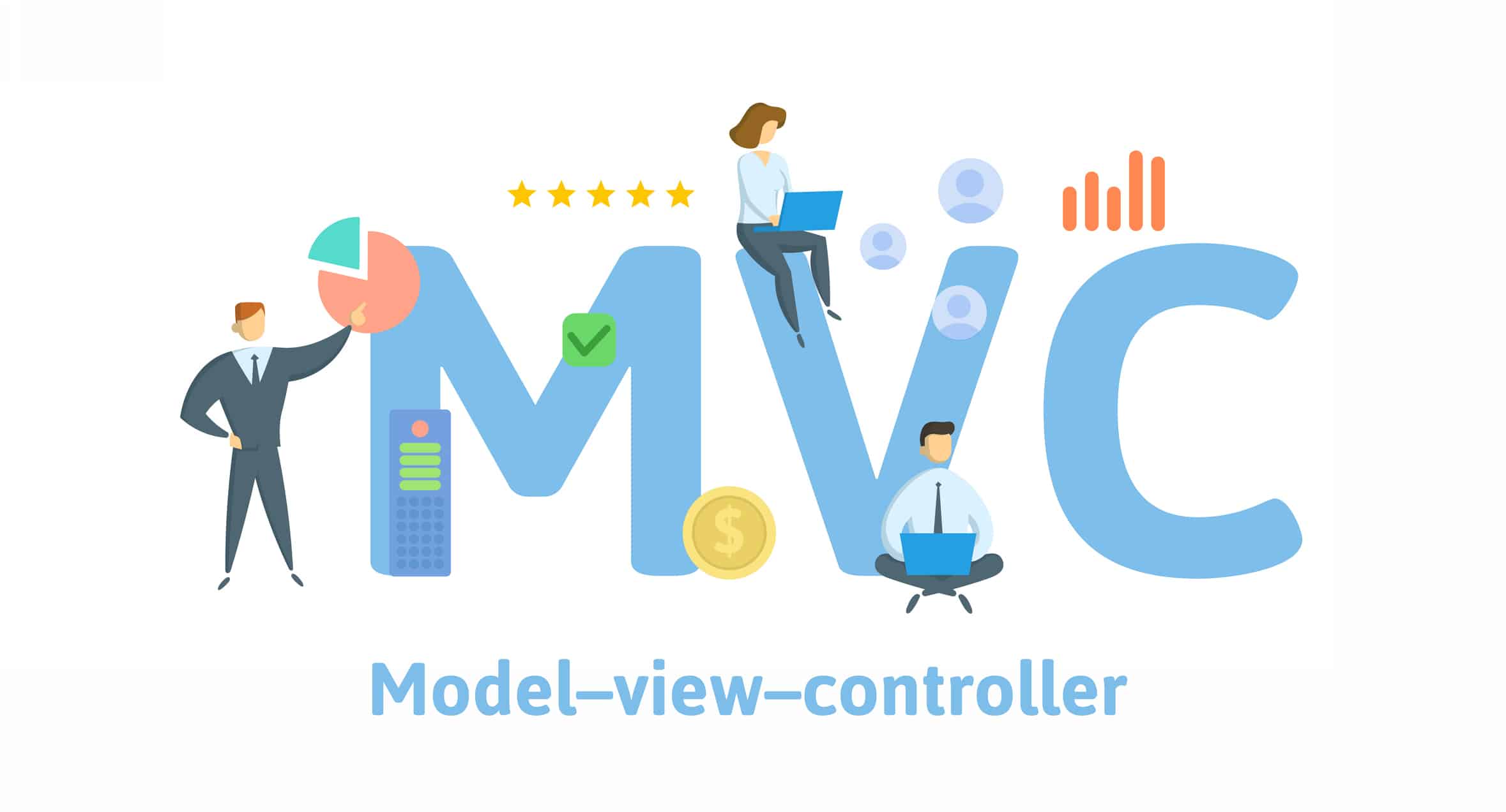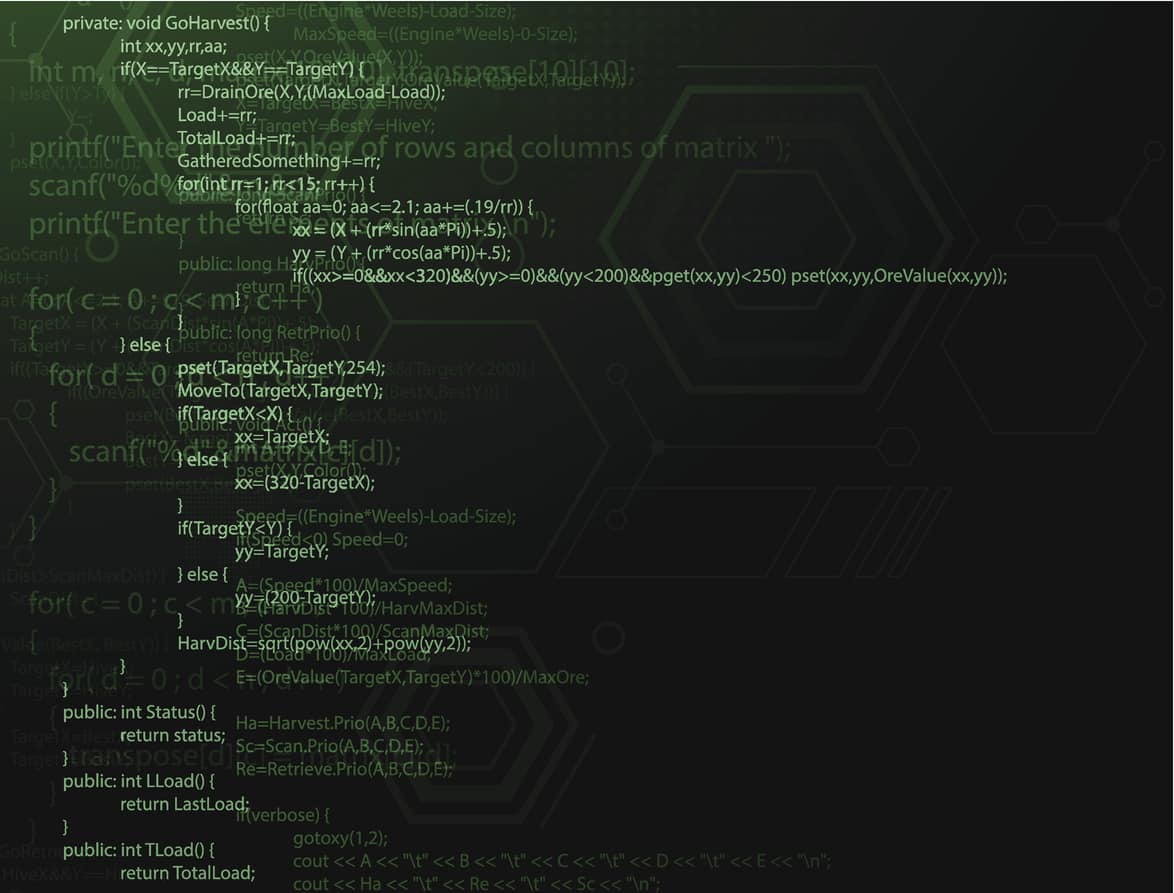Introduction
In this article, we are going to cover many important aspects of MVC Architecture. You will come to know its fundamentals and its benefits over the traditional approach.
What is MVC?
MVC, or Model-View-Controller, is an architectural pattern used in software engineering. It is typically used in web applications and is a way of separating concerns, or functionality, into different parts of an application. MVC is made up of three parts: the model, the view, and the controller. The model is the data, the view is the way the data is presented, and the controller is the code that interacts with the model and the view. MVC is a way of organizing code so that it is easier to maintain and extend. It is also a way of making sure that the different parts of an application are independent of each other, so that changes to one part do not affect the others. MVC is a popular architectural pattern and is used by many frameworks, such as Ruby on Rails and ASP.NET MVC.
If we look at the working pattern of the traditional programming approach, we will find it like this:
Input -> Process -> Output
Whereas the working pattern of MVC is like this:
Controller → Model -> View
In the traditional programming approach, the UI coding, business logic, and applications data domain were written into a single file, which resulted in the lack of maintainability, scalability of the application, and testability.
The MVC emerged as a problem solver and provided help to create applications in such a way that it could have been possible to separate the different aspects of the application, such as the UI coding, business logic, and applications data domain. To achieve the separation of different aspects of the application, loose coupling is provided between these elements.
The pattern is used to specify the location for each kind of logic in the application. As a result of separation, the UI logic belongs in the view, Input logic belongs in the controller, and Business logic belongs in the model. With the help of this separation, while building an application, complexity is managed effectively by the programmers because it makes the programmer able to concentrate on one aspect of the implementation at a time.
For instance, the programmers can have their complete focus on the view without depending on the business logic.
Aim
The MVC Architecture is designed to separate the Business logic & Application data from the User interface (UI).
Development
It was a brilliant effort of Trygve Mikkjel Heyerdahl Reenskaug, a Norwegian computer scientist and professor emeritus of the University of Oslo that the formulation of the model–view–controller pattern for graphical user interface software design could be possible in 1979 while visiting the Xerox Palo Alto Research Center.
It was invented to solve a problem in the shipbuilding industry in Norway.
MVC was created as a general solution to the challenges faced by the users while governing a vast and complex data set.
Initially, it was named Model-View-Editor. After long discussions and considering many factors, finally, it was named Model-View-Controller.
Versions
- 10 December 2007
ASP.NET MVC CTP (initial)
- 13 March 2009
ASP.NET MVC 1.0
- 16 December 2009
ASP.NET MVC 2 RC
- 4 February 2010
ASP.NET MVC 2 RC 2
- 10 March 2010
ASP.NET MVC 2
- 6 October 2010
ASP.NET MVC 3 Beta
- 9 November 2010
ASP.NET MVC 3 RC
- 10 December 2010
ASP.NET MVC 3 RC 2
- 13 January 2011
ASP.NET MVC 3
- 20 September 2011
ASP.NET MVC 4
Developer Preview
- 15 February 2012
ASP.NET MVC 4 Beta
- 31 May 2012
ASP.NET MVC 4 RC
- 15 August 2012
ASP.NET MVC 4
- 30 May 2013
ASP.NET MVC 4 4.0.30506.0
- 26 June 2013
ASP.NET MVC 5 Preview
- 23 August 2013
ASP.NET MVC 5 RC 1
- 17 October 2013
ASP.NET MVC 5
- 17 January 2014
ASP.NET MVC 5.1
- 10 February 2014
ASP.NET MVC 5.1.1
- 4 April 2014
ASP.NET MVC 5.1.2
- 22 June 2014
ASP.NET MVC 5.1.3
- 1 July 2014
ASP.NET MVC 5.2.0
- 28 August 2014
ASP.NET MVC 5.2.2
- 9 February 2015
ASP.NET MVC 5.2.3
- 12 February 2018
ASP.NET MVC 5.2.4
- 2 May 2018
ASP.NET MVC 5.2.5
- 11 May 2018
ASP.NET MVC 5.2.6
- 29 November 2018
ASP.NET MVC 5.2.7
- 12 April 2022
ASP.NET MVC 5.2.8 (Current)
What is ASP.NET?
ASP.NET is mainly a server-side technology that is used for creating and developing dynamic websites and web applications. This latest version of Active Server Pages is developed by Microsoft for building dynamic applications. Its first version of ASP.NET was released in 2002. With the help of ASP.NET, data-driven and interactive web applications can be produced on the internet.
What is ASP.NET MVC?
ASP.NET MVC can be defined as open-source software that is used for the development of dynamic websites and applications on the .Net framework with the combination of the features of MVC.
MVC is a type of pattern that is used for designing user interfaces, application logic, and data to achieve separation of applications.
The function of MVC is to separate applications into three groups Model, View, and Controller, to reduce the complexity and make the applications more feasible in coding, debugging, and testing.
Microsoft released the first version of ASP.NET MVC in 2007 with the existing ASP.NET features.
MVC Concept
The MVC is based on the following concepts:
1. Model
- The function of the Model object is to display all the data.
- The Model is used to represent the application data and business rules that are required to govern an update of data.
- Model unaware about the presentation of data and about the pattern to display the data to the browser.
2. View
- The function of the View Model is to hold only those properties that are required for a view.
- Properties from more than one entity (tables) of the database are also contained in the View Model.
- It can be guessed from its name that it was created specifically for the View purpose.
3. Controller
- The controller is the first point through which a request sent by a user is passed.
- The responsibility of a Controller is to intercept the request from View and then pass the request to the model for a particular action.
- After the completion of the action on the data, the Controller's responsibility is to pass the appropriate View to the user directly.
- Both Controller and View work very closely in GUI (graphical user interface).
Benefits of MVC
1. Organise Large-size Web Applications
Because of the segregation of the code between three levels, web application logic can be divided and organized easily into large-scale applications (which are usually required to be managed by large teams of developers). Using such code practices can prove major advantageous as with this, particular portions of code can be found out quickly, and new functionality can be added easily.
2. Provides Support For Asynchronous Method Invocation (AMI)
An important factor of the MVC architecture is that it coordinates with JavaScript and its framework well, and this is the reason it also supports the use of Asynchronous Method Invocation (AMI), which enables developers to build faster loading web applications. Therefore, MVC applications can be developed to work even with PDF files, site-specific browsers, and in addition, for desktop widgets too.
3. Easy To Modify
With the help of the MVC methodology, the entire application can be modified easily.
Adding and updating the new type of views can be done easily in the MVC pattern because a single section is not dependent on the other sections. So, if there is any change in a particular section, the entire architecture will not be affected. Hence, the flexibility and scalability of the application are increased.
4. Faster Development Process
Segregation of the code among the three levels can be carried out in MVC architecture, so while developing web applications using the MVC model, one developer can work on a particular section, take View, for example, and another can work on another section, take Controller for example, and all these things can be done simultaneously. This helps in the easy implementation of business logic and acceleration of the development process.
It is noticed that the development speed of the MVC architecture is approximately three times higher than the other development models.
5. Easy To Plan And Maintenance
During the initial planning phase of the application, the MVC model is very helpful because it provides the developer with an outline, with which the developer can arrange their ideas into actual code effectively. With the help of this effective tool, the duplication of code can be controlled, and maintenance of the application can be carried out easily.
6. Returns data without formatting
It returns un-formatted data, and this enables the programmers to create their view engine.
For example, to format any type of data, HTML is used but using the MVC framework, a programmer can also use Macromedia Flash or Dreamviewer for formatting the data. With this help, the developers can re-use the same components with any interface.
7. Provides Support To TTD (Test-driven Development)
MVC pattern simplifies the testing process a great deal. In MVC architecture, it is easy to debug large-scale applications because multiple levels are structurally defined and written correctly in the application. This provides a trouble-free environment for developing an application with unit tests.
8. Multiple Views
The MVC architecture helps to develop different view components for the model component. It enables the programmers to develop different view components, thus reducing code duplication by separating data and business logic.
9. SEO-Friendly Platform
The MVC platform provides great support for the development of SEO-friendly web applications.
MVC provides an easy approach to creating SEO-friendly RESTful URLs to increase the number of visitors to a specific application.
Disadvantages of MVC pattern
The disadvantages of the MVC architecture are not so huge and can be ignored easily when compared to all the benefits it provides.
The disadvantages are as follows:
1. Complexity
New levels of indirection introduced by the MVC architecture increase the complexity of the solution.
The event-driven nature of the user-interface code also increases, which is more difficult to debug.
2. Cost of frequent updates
Developers cannot completely ignore the model's perspective, even if they are decoupled.
If the model is frequently updated, the views could be flooded with update requests.
Views like graphical displays may take some time to render, and due to this, the view may be delayed in responding to update requests.
3. Unsuitable For Small Applications
It is not suitable for small applications, and because of this, an adverse effect is created in the application’s performance and design.
4. Isolated development processes
For the development of modules, UI authors, business logic authors, and controller authors use isolated development processes, which may cause delays in their respective modules' development.
Popular MVC web frameworks
A list of some popular MVC frameworks is as follows:
- Ruby on Rails
- Django
- CakePHP
- Yii
- CherryPy
- Spring MVC
- Catalyst
- Rails
- Zend Framework
- CodeIgniter
- Laravel
- Fuel PHP
- Symphony
Practical Example Of MVC framework In Daily Life
We come across many examples of MVC in our daily life but are not able to pay attention to it just because of the lack of awareness about MVC.
Let's simply understand this. When we go to a cafe and order mocktails from the waiter, then the waiter passes this order to the bartender, and the bartender draws the required bottles from the fridge for the preparation; when the mocktails are ready, he hands them over to the waiter, and the waiter hands it over to us.
Now try to relate all these sequences followed in the purchasing with the working pattern of MVC. We will find that here we are as a View, the waiter is a Controller, the bartender is a Model, and the fridge is a Data.
We, the View in the example, cannot communicate directly with the 'bartender,' which is the Model in this case. The Controller's waiter does not know how to process our order; he just shared this order with the bartender, who is the Model in this case. Only the bartender, who is a Model, can access the Data that is a fridge in this case.
Conclusion
With this, we have reached the end of this article. In this article, we have tried to provide you with insights into many important aspects of MVC architecture. We are sure that after reading this article, you will carry many important facts about MVC architecture at home as knowledge.
It is a fact that MVC is not that easy to understand and learn. It is difficult, but we can assure you that with passion, willingness and commitment, it can be learned at a scale.
Any queries you have, you are welcome to write to us, or you can visit our website"Greatlearning.com." Our well-trained, committed, dedicated team is always ready to support you 24*7.






